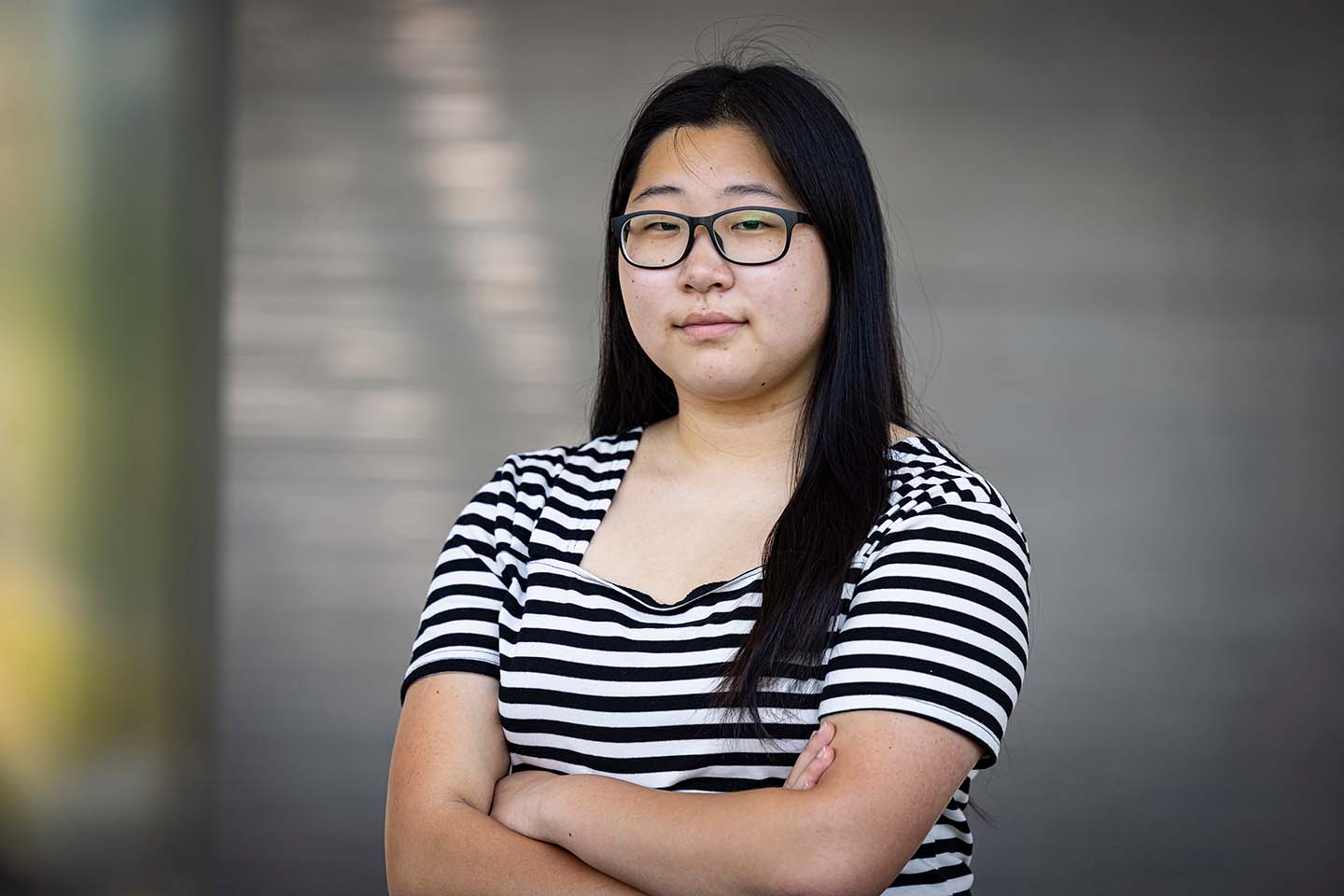News
ASPIRE Intern’s Project Selected for Space Testing
Juggling high school while creating a project worthy of travel to space is no simple task, but Allie Kang made it look easy.
Kang, then a rising high school senior, came to the Johns Hopkins Applied Physics Laboratory (APL) in Laurel, Maryland, in September 2021 as an ASPIRE (APL’s Student Program to Inspire, Relate and Enrich) intern with an open mind and a desire to learn. After months of hard work and assistance from APL staff members and resources, in May 2022 Kang heard some great news: The Cubes in Space program had selected her project to be tested in space.
Run by idoodlEDU inc., Cubes in Space provides students across the globe, ages 11 to 18, with an opportunity to have their experiments launched into space in collaboration with NASA facilities. Kang had crafted an experiment with the intention of measuring the impact of radiation on components of food.
“At first my project was focusing on calorie changes in foods as a result of radiation, but then we figured out it could be better to focus on a specific aspect of a food part. So, I decided to look into amino acids,” Kang said. “I found that lysine is an essential amino acid and it is abundant in soybeans. My project focuses on studying the effects of radiation and how that changes the mass-to-charge ratio of lysine in soybeans.”
In other words, Kang looks forward to exploring how the essential nutrients in soybeans are impacted by space radiation.
Cubes in Space selected Kang’s experiment after she participated in a multistep application process and faced the program’s comprehensive review of proposed experiments. Although it is a lengthy and competitive process, she did not have to go through it alone. Her ASPIRE mentor, Ryan Darragh, a computational physicist in APL’s Research and Exploratory Development Department, supported her throughout.
Darragh assisted Kang with refining her hypothesis and helped answer questions as they arose.
“Seeing her develop her hypothesis was impressive — how she was able to do that pretty much all on her own,” Darragh said. “She came up with the idea herself, what she wanted to look for and why she wanted to look at it. Seeing her iterate on that to get to what she submitted was another highlight for me.”
Darragh added that he finds it beneficial to allow students autonomy over their assignments and research so they can figure out how to navigate projects on their own.
In July 2022, Kang sent her project materials to be prepped for launch via a zero-pressure scientific balloon. The soybeans took flight from NASA’s Columbia scientific balloon facility that summer. Kang’s hypothesis anticipated a decrease in the presence of lysine in the space-traveling soybeans, and she is eager to study the results.
Beyond her successful project submission, Kang has found the ASPIRE intern program to be an eye-opening experience overall.
“Before this program I was really focused on one area of study. I thought I was going to go all the way with veterinary science or anything veterinary related,” she recalled. “I ended up doing research on something I didn’t even know existed. So, this was a really good experience in opening up my education to other fields of study that I would have never been exposed to elsewhere.”
The Cubes in Space project was not the only thing Kang worked on within the ASPIRE program. She also conducted a literature review that researched how space affects bodily fluids, with a specific focus on blood. She was interested in learning how the effects ultimately impact people in space.
Kang — and her out-of-this-world talent — remained on campus to extend her ASPIRE internship through the summer, and Darragh continued as her mentor. She plans on pursuing college after she graduates in spring 2023 and is pondering an undergraduate major in computer science or an engineering discipline. With one experimental project already approved for space travel, the possibilities are endless.
